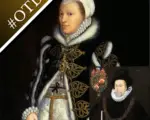
On this day in Tudor history, 26th April, Queen Anne Boleyn’s chaplain made a promise to the queen; Catherine Carey, daughter of Mary Boleyn, married Francis Knollys; and playwright William Shakespeare was baptised…
[Read More...]
On this day in Tudor history, 26th April, Queen Anne Boleyn’s chaplain made a promise to the queen; Catherine Carey, daughter of Mary Boleyn, married Francis Knollys; and playwright William Shakespeare was baptised…
[Read More...]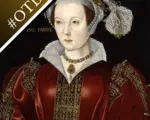
On this day in Tudor history, 25th April, Henry VIII wrote of his hopes for his future with Anne Boleyn, the woman he’d soon set aside; Thomas Stafford proclaimed himself “Protector of the Realm”; Catherine Parr’s translation of “Psalms or Prayers” was published anonymously; and St Mark’s Day was celebrated…
[Read More...]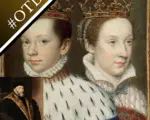
On this day in Tudor history, 24th April, Lord Chancellor Thomas Audley set up some of the legal machinery used in the fall of Anne Boleyn; Mary, Queen of Scots married Francis, the Dauphin, at Notre Dame; and it was the night for divining who you were going to marry…
[Read More...]
On this day in Tudor history, 23rd April, Sir Nicholas Carew was elected to the Order of the Garter, rather than George Boleyn, whose name had also been put forward; and the famous playwright William Shakespeare died on a day that may also have been his birthday…
[Read More...]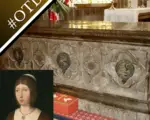
On this day in Tudor history, 22nd April, Henry Clifford, 1st Earl of Cumberland, magnate and Warden of the West Marches, died, and Francis Beaumont, Justice of the Common Pleas, died from gaol fever. It’s also the anniversary of the birth of Isabella I of Castile…
[Read More...]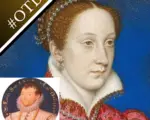
On this day in Tudor history, 19th April, Mary, Queen of Scots got betrothed to the Dauphin; Sir Francis Drake “singed the King of Spain’s beard”; and a Catholic bookseller was hanged at Tyburn…
[Read More...]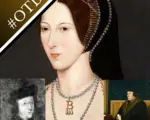
On this day in Tudor history, 18th April, imperial ambassador had an encounter with Queen Anne Boleyn; Thomas Cromwell was made Earl of Essex just three months before his execution; and famous martyrologist John Foxe died aged around seventy…
[Read More...]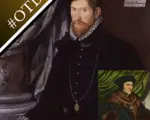
On this day in Tudor history, 17th April, Sir Thomas more was sent to the Tower of London; a jury was arrested after acquitting Sir Nicholas Throckmorton of treason; and Jesuit martyr Henry Walpole was hanged, drawn and quartered…
[Read More...]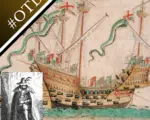
On this day in Tudor history, 16th April, the Mary Rose began her first tour of duty; Francis Anthony, who is known for his drinkable gold, was born; and famous conspirator Guy Fawkes was baptised in York…
[Read More...]
On this day in Tudor history, 15th April, kings’ champion Sir Robert Dymoke died; Robert Devereux, 2nd Earl of Essex, was sworn in as Lord Lieutenant of Ireland, little knowing it would lead to his undoing; and privy chamberer Sir John Scudamore was buried…
[Read More...]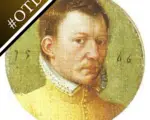
On this day in Tudor history, 14th April, Sir Anthony Kingston died on his way to be tried for treason; astrologer, astronomer and magician Edward Gresham was born; and Mary, Queen of Scots’ third husband, the Earl of Bothwell, died in appalling conditions…
[Read More...]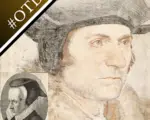
On this day in Tudor history, 13th April, Sir Thomas More was summoned to swear his allegiance to the Act of Succession; ohn Brydges, 1st Baron Chandos of Sudeley, a man who was known as a rather lenient Lieutenant of the Tower of London when Elizabeth (I) was imprisoned there, died; and priest harbourer Anne Howard, Countess of Arundel, died…
[Read More...]
Thank you so much to Dr Elizabeth Goldring for letting me know about a wonderful new discovery.
Emma Rutherford and Elizabeth discovered a beautiful cabinet miniature of Lady Arbella Stuart by Nicholas Hilliard in a private collection. It really is stunning and you can find out more about it in an article by Elizabeth and Emma in The Burlington Magazine
[Read More...]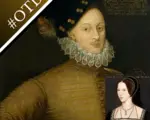
On this day in Tudor history, 12th April, Anne Boleyn attended Easter Sunday mass as queen, causing quite a stir, and courtier and poet Edward de Vere, 17th Earl of Oxford, was born…
[Read More...]
On this day in Tudor history, 11th April, Henry VIII ordered his council to recognise Anne Boleyn as queen; Sir Thomas Wyatt the Younger was executed by beheading after his failed rebellion against Mary I; and conspirator, patron and collector John Lumley, 1st Baron Lumley, died…
[Read More...]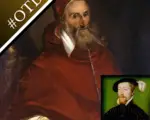
On this day in Tudor history, 10th April, Margaret Tudor, Queen of Scotland, gave birth to a son who’d become James V of Scotland; Pope Gregory XIII, who’s known for the Gregorian Calendar, died in Rome; and sea captain Sir Bernard Drake died, probably from typhus…
[Read More...]
On this day in Tudor history, 9th April, Catherine of Aragon found out that she’d been demoted to Dowager Princess of Wales; Cardinal Pole’s legatine powers were revoked; and Catherine Willoughby’s second husband, Richard Bertie, died…
[Read More...]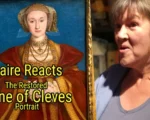
Join me as I react to the newly restored portrait of Anne of Cleves, painted by the renowned artist Hans Holbein the Younger in 1539. Housed in the Richelieu Wing of the Louvre Museum in Paris, this iconic portrait has undergone a transformative restoration, breathing new life into its captivating depiction of Henry VIII’s fourth wife.
[Read More...]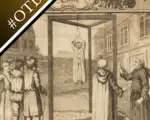
On this day in Tudor history, 8th April, a cat dressed as a priest was found hanging on the gallows in Cheapside; Lutheran theologian Martin Chemnitz died; and Catholic patron Magdalen Browne, Viscountess Montagu, died…
[Read More...]
On this day in Tudor history, 7th April, Charles VIII of France died after hitting his head on a lintel; Robert Aske and Thomas Darcy, 1st Baron Darcy, were sent to the Tower of London for their parts in the Pilgrimage of Grace rebellion; and Elizabeth Boleyn, Countess of Wiltshire, was buried…
[Read More...]
On this day in Tudor history, 6th April, Henry Stafford, Earl of Wiltshire and a favourite of Henry VIII, died; Sir Francis Walsingham, Elizabeth I’s principal secretary and spymaster, died; and Edward Seymour, 1st Earl of Hertford and son of Edward Seymour, Duke of Somerset, died…
[Read More...]
On this day in Tudor history, Bishop Fisher’s cook was boiled to death as a poisoner; Convocation ruled on the case of Henry VIII’s annulment; and the new King of England left Edinburgh to travel to London, he was now King of England, Ireland and Scotland…
[Read More...]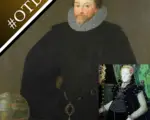
On this day in Tudor history, 4th April, writer William Strachey, whose account of a shipwreck inspired Shakespeare, was born; Francis Drakes was knighted by Elizabeth I; and noblewoman and scholar Mildred Cecil, Lady Burghley, died…
[Read More...]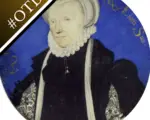
On this day in Tudor history, 3rd April, Elizabeth Boleyn, Countess of Wiltshire and Ormond and Anne Boleyn’s mother, died; the Peace of Cateau-Cambrésis was signed; and Margaret Douglas, Countess of Lennox and daughter of Margaret Tudor, was buried…
[Read More...]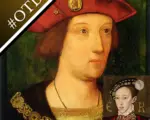
On this day in Tudor history, 2nd April, Henry VII’s eldest son, Arthur Tudor, Prince of Wales, died at Ludlow Castle; Anne Boleyn’s almoner, John Skip, preached a controversial sermon; and fourteen-year-old Edward VI fell ill with measles and smallpox…
[Read More...]
On this day in Tudor history, 1st April, Chapuys, the imperial ambassador, reported that Henry VIII had sent Jane Seymour a purse of money; physician William Harvey, who discovered the circulation of blood, was born; and author and soldier Thomas Churchyard died…
[Read More...]
On this day in Tudor history, 31st March, the dying Henry VII made his will; Friar William Peto compared Henry VIII to Ahab and Anne Boleyn to Jezebel; and metaphysical poet and satirist John Donne died…
[Read More...]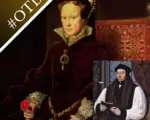
On this day in Tudor history, 30th March, Thomas Cranmer was consecrated as Archbishop of Canterbury; Robert Ferrar, Bishop of St David’s, was burnt to death; Mary I made her will, believing she was pregnant; and administrator Sir Ralph Sadler died…
[Read More...]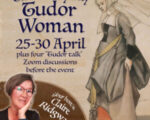
Join me for “The Everyday Tudor Woman” event from April 25th to April 30th! Dive into the fascinating world of Tudor history as we explore the lives of everyday women from the 16th century.
[Read More...]
Today, it’s Good Friday – in the Western Calendar anyway – so I wanted to share with you how this feast day was marked in medieval and Tudor times.
Here’s a talk I did a few years ago about the medieval and Tudor traditions associated with Good Friday.
[Read More...]